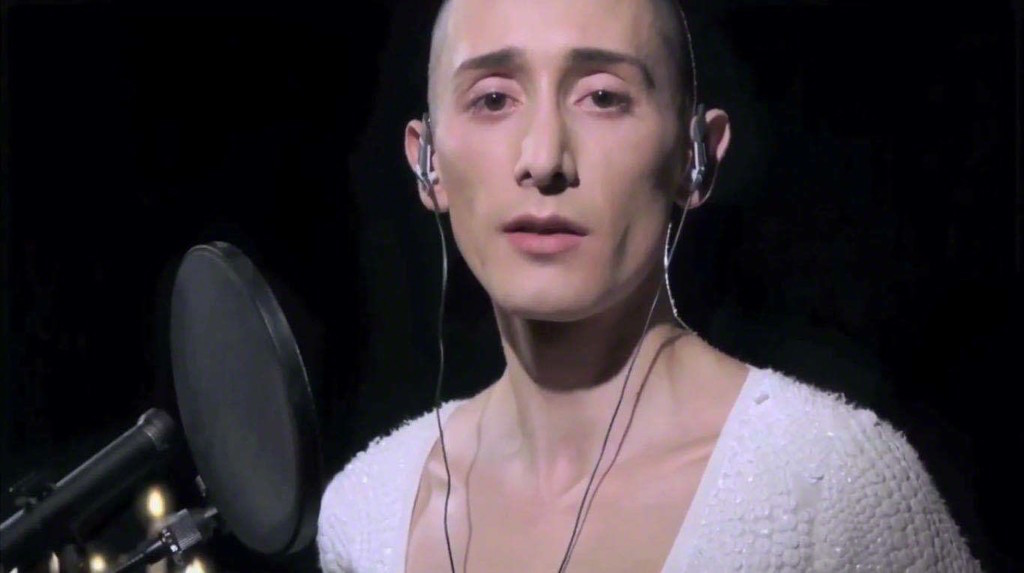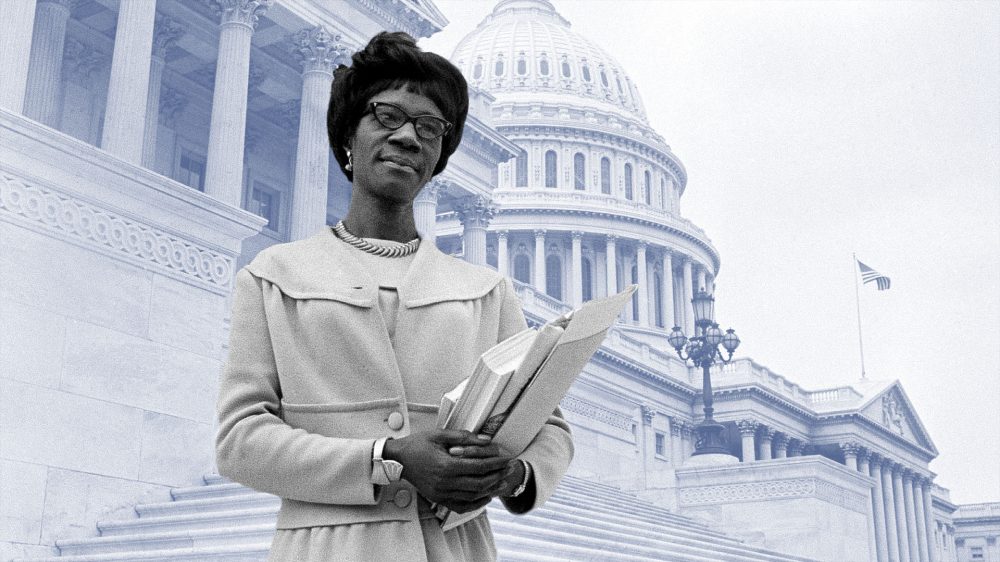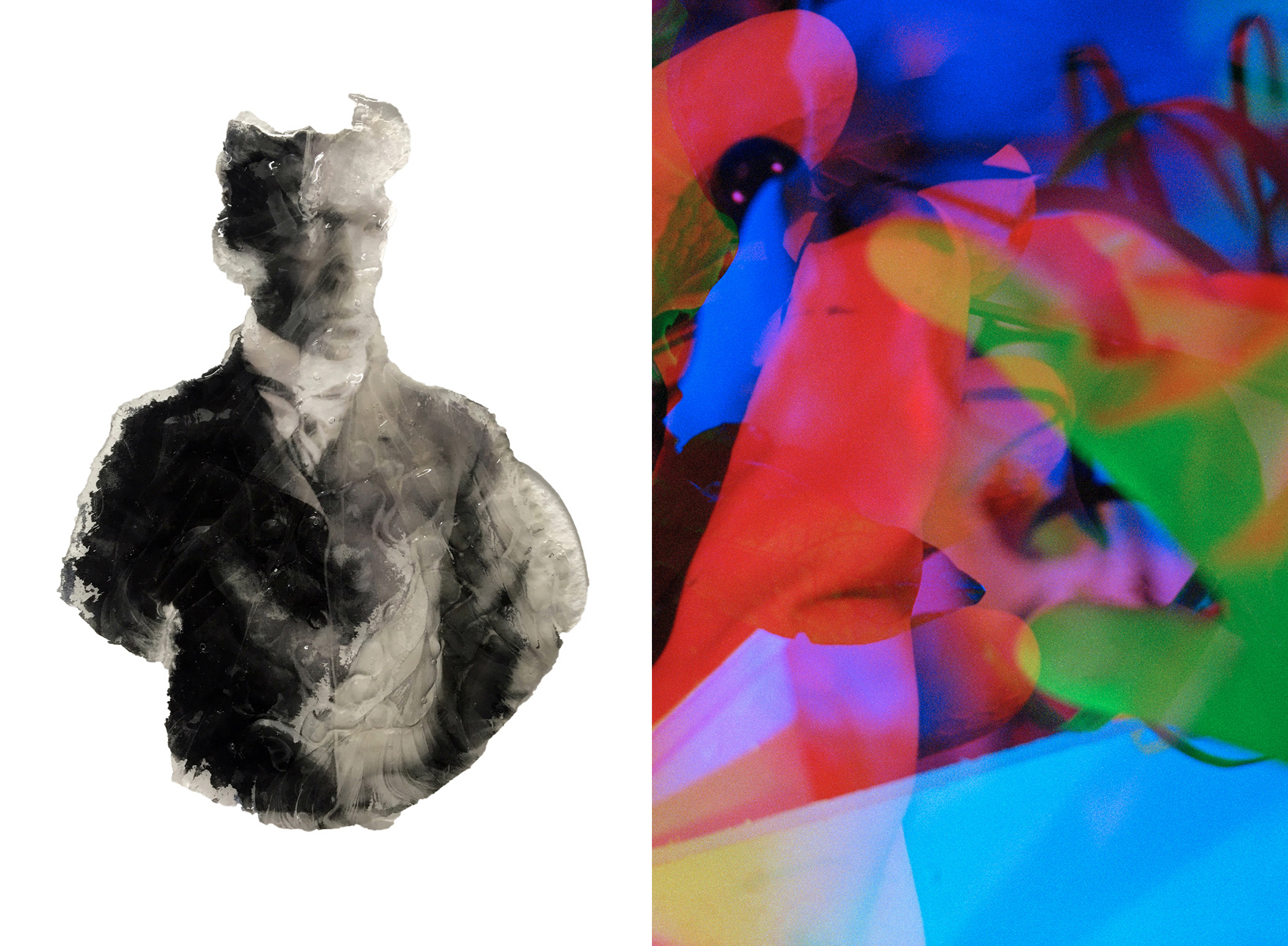Concurrent Solo Shows by Antonio McAfee and Rachel Guardiola at Hamiltonian Gallery in DC Explore Memory and Perception by Juliana Biondo
Kicking off 2018 with their first exhibition of the year, Hamiltonian Gallery in Washington DC is currently presenting two exhibitions: Old Bad Air by Baltimore-based Antonio McAfee and A Hand Without a Horizon Is Taller Than Its Other by DC-based Rachel Guardiola. Curated separately, with each body of work sitting in it’s own space within the gallery as to avoid any conceptual overlap, viewers are presented with two unique bodies of work.
While McAfee questions the social politics of history through the use of an installation piece and photographic prints, Guardiola explores a realm of perception around fantastical horticulture through chromogenic prints and video. After viewing both shows one can understand that both artists present nuanced perspectives that require patience and time to fully appreciate, where meaning continues to slowly unveil itself long after leaving the gallery.
Rachel Guardiola: A Hand Without A Horizon Is Taller Than Its Other
 Rachel Guardiola. Archaeologies from VEGA’s Garden. 2017. Unique chromogenic color print (darkroom print). 20 x 24 inches. Image courtesy of the artist.
Rachel Guardiola. Archaeologies from VEGA’s Garden. 2017. Unique chromogenic color print (darkroom print). 20 x 24 inches. Image courtesy of the artist.
“There is this play of perception… transferring between being a spectator…then flipping back to a first person perspective…Seeing as if you were in the body of another other.” – Rachel Guardiola
Perception is the interplay between vision, space, and plurality of subject matter. In order to perceive disparate things, there must be an in-between area, a negative space that allows objects their individuality of form. Additionally, there must be more than one thing present, to create points of comparison. The further comparison of the formal characteristics – size, color, form, clarity, etc.- of two things placed within a shared area allows for the eye to understand object-ness, thus experience perception. With perception in hand, a viewer can begin to understand.
What happens when these elements that allow for perception are condensed, manipulated, or erased? What happens to our ability to understand? Guardiola’s chromogenic print pieces deliberately confront this question through the lens of botany.

By creating fantastical worlds which use various types of flora, but ultimately creating a world of vegetation and types of flora that do not exist in real life, Guardiola disrupts our ability to perceive. With multiple layers of color, shape, and space the artist creates a composition that is chaotic, flattens space, and dissects object forms, to eventually yield an image that evades any kind of visual logic.
The flora which are used to construct the composition seem to be real, but they come together to create a fantastical confused world, which prevents the viewer from using their own logic to understand the piece. As a result, the viewer becomes an outsider, an “other.” We stand forever outside of the piece, aware of our ongoing status as a spectator.

The variety of vegetation layered into these prints to produce the new and unfeasible plant species was grown inside a greenhouse. The very use of a greenhouse – that environment which creates microclimates for otherwise impossible growth within the naturally occurring local environment – is an additional parallel to the play of perception, which sits behind the works. The piece which overlays two circles on top of the image of vegetation, and is part of Archaeologies from VEGA’s Garden, is particularly successful in how it speaks to the phenomenon of perception by making a meta-reference to vision.
Sharp angles cut across the print, interrupting the dark shadows that carve out the negative spaces, which give form to the leaves. Intense fuchsia, bright orange, and chalky whites dominate the color palette of this work. On top of all this, two circles are placed exactly in the middle, focusing the viewers’ attention as if he or she was looking through a set of binoculars. We are directed to look at certain areas, yet still those areas present us only with visual gibberish. Again, the image is not a sum of its parts, but rather an exposition of fragments. The confrontation with that which seems to be a reality, but in actuality is a fabrication, prevents the viewer from leveraging logic confirm their perception, making him or her at once an active spectator, and an “other.”
Directly calling our attention to the piece through the use of binocular-like forms further intensifies our desire to see – we are being directed by shapes that seem to tell us that they hold the keys for our visual clarity. But, it is these very shapes that lead us to a scene that is even more visually confusing. The artist’s leveraging of our expectation for understanding in addition to the actual constraints of our logic makes this piece notably one of the strongest within her body of work.
Antonio McAfee: Old Bad Air

“I thought about these figures and the atmosphere affecting them, blending into this environment, becoming invisible, it’s fog and its mist. These shape shifters, being able to control their own image.” – Antonio McAfee
Standing in front of a large white wall, one views a set of portraits that hang like specimens, asking for the viewer to examine each one carefully, as each is peculiar and unique. The portraits, Making and Unmaking, feature historic 19th century photographic portraits of people of color, presumably African-American. With their edges curled and seemingly burned, each portrait seems to have barely survived a flood and fire.
The images are discernable, yet clearly modified. Some sepia tones further accent the works. The presentation of the images ask the viewer to approach the images as they were intended for history, preserved and understood as an emblem of what was. But, their modifications of curled and bent edges ask the viewer to not just examine the images, but re-examine them and question exactly what kind of emblem they are, and for what kind of history.
Each photograph is translucent. The works catch the light and play with it, generating shadows that cascade down the wall adding to the body and presence of the physical material of the photograph. Looking at the spontaneity of shadow generated thanks to the transparency of the portraits, the idea of fleeting memory comes into focus. Like a photograph, a memory is ephemeral, captured in just a moment, but then develops over time. Like light and shadow, memories change with the context – a smell makes it more vivid, and sound brings it to mind. Like the relationship between object and shadow, memories adds to the current moment, making that moment more because of what came before it, or what caused it. Memories are akin to the shadows of life, and certain memories are codified as history.
 Making and Unmaking, 2018. Acrylic medium and pigment ink. Dimensions variable. Image by Juliana Biondo.
Making and Unmaking, 2018. Acrylic medium and pigment ink. Dimensions variable. Image by Juliana Biondo.
This installation piece uses photographs, tangible memories, to generate an active duality – it presents images that are at once the thing itself but in transition to something else – and is exceptionally powerful. It is this image-in-transition that carries the important message of McAfee’s work: a demand for careful looking at of the memory of these individuals in order to re-frame how they have been categorized and forgotten, but are now reframed to be discussed and placed in the larger historical contact.
McAfee’s series of larger individual prints have much to engage with, their generally static quality does not confront the idea of transition as directly. Yet, there is one print that does embrace this image-in-transition sentiment, titled Oval #8, which presents the profile view of an African-American woman, vignetted from just below the hip. The entirety of her body is dissected with strong diagonal lines that converge at her waist, pulling her figure into what reads as the beginning of a vortex. Barely there, the subject seems to be either on the verge of being dragged out of the frame completely, wrapped up on a cloth that is covering and changing her, or uncovered as if the vortex of cloth is trying to unwind itself and reveal what lies beneath.
 Antonio McAfee, Oval # 8, 2017. Digital C-print, edition 1 of 5 + AP. 24 x 36 inches. Image by Kyle Tata, courtesy of Hamiltonian Gallery.
Antonio McAfee, Oval # 8, 2017. Digital C-print, edition 1 of 5 + AP. 24 x 36 inches. Image by Kyle Tata, courtesy of Hamiltonian Gallery.
Is this image revealing, or does it hide more than it shows? Whose ancestor is this and whose memory does she belong to?
It is this duality that brings the viewer back so meaningfully to the idea of collective memory, this time more directly with history, specifically the images and voices that have been erased of 19th century African Americans. This photograph is one of McAfee’s most successful as it demands, formally and conceptually, that we question how our memories are formed, what exactly they capture, what lies below, what meets the eye – real truths, or convenient truths – and if the image captured at all adequately preserves the spirit of what actually was.
It is this reimagining of history that encourages all of us to look beneath the surface to construct a truer depth and fully appreciate the level of ‘masking’ and covering up that has been inherent in our American narrative.
Both artists’ works will be on view through February 17, 2018. The gallery is open Tuesday through Saturday, 12-6pm, or by appointment.
Images Courtesy of Hamiltonian Gallery and by Kyle Tata






